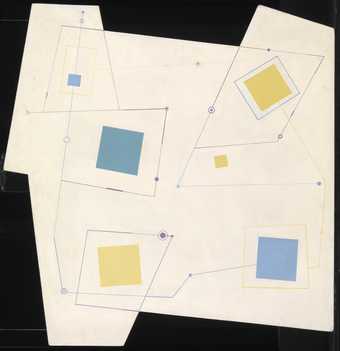
Carmelo Arden Quin, Carres 1951. Lent by the Tate Americas Foundation, courtesy of the Latin American Acquisitions Committee 2014. © estate of Carmelo Arden Quin; courtesy Ignacio Pedronzo, Sammer Gallery Miami.
A view from São Paulo: Abstraction and Society
12 rooms in Artist and Society
Explore how geometric abstraction fabricated dreams of a new society in the twentieth century
This room looks at abstract works from different moments in the twentieth century which reflect the aspiration to invent a new society. With a focus on artists associated with the São Paulo Biennial, it includes work by Latin American artists who emerged in the 1950s, as well as European artists from the first half of the twentieth century.
The São Paulo Biennial was founded in 1951, a moment of rapid economic growth and urban development in Brazil. This was also a time when younger artists in São Paulo and in Rio de Janeiro were developing a new form of geometrical abstraction.
From the European abstract art of the early twentieth century they took a rigorous approach to art that was infused with political idealism. By rejecting the past and embracing new forms, abstraction was associated with ideas of social change.
Revisiting these ideas and ideals in the 1950s, artists in Brazil developed more personal forms of abstraction to ‘express complex human realities’, in the words of Ferreira Gullar’s Neo-Concrete Manifesto 1959. This led to new experimental practices involving participation and performance in which the artwork entered directly into everyday life.
This is one of a series of rooms at Tate Modern, each offering ‘a view from’ a different city. They focus on a period when new approaches to art-making emerged, developing locally and in dialogue with artists from other parts of the world.
Curated by Matthew Gale
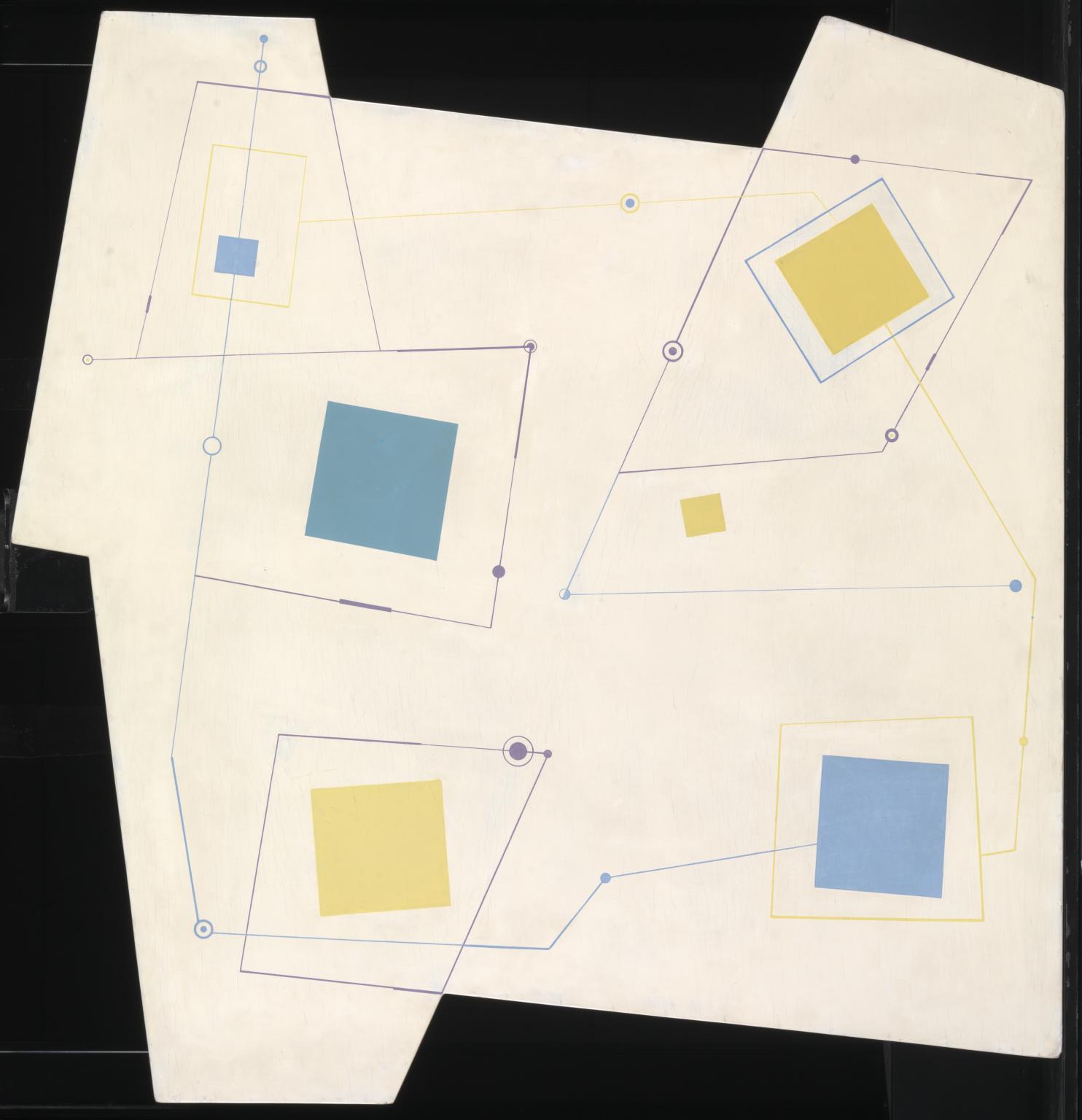
Carmelo Arden Quin, Carres 1951
1/30
artworks in A view from São Paulo: Abstraction and Society
Sorry, no image available
Piet Mondrian, Composition C (No.III) with Red, Yellow and Blue 1935
Mondrian used a simple visual language in his work. This composition is a clear example of his technique. It consists of horizontal and vertical lines in black, with planes of white. It also features the three primary colours, from which all other colours are made by mixing. Through the structure and order of the elements, Mondrian was suggesting an idealised view of society. Each individual element contributes to the overall composition of the work. This was intended to symbolise the relationship between the individual and the collective.
Gallery label, June 2021
2/30
artworks in A view from São Paulo: Abstraction and Society

Josef Albers, Untitled Abstraction V c.1945
Albers was fascinated by the nature of visual perception. The interlocking shapes of Untitled Abstraction V play with ideas of perspective and make it difficult to distinguish between foreground and background. In Germany, Albers taught at the Bauhaus school of art and design from 1923, and after the National-Socialist regime forced it to close in 1933 he carried its utopian ideas with him to a new teaching post at Black Mountain College in North Carolina. The Neoconcrete Manifesto, displayed in the vitrine below, mentions Albers as an important influence on the Brazilian movement.
Gallery label, January 2022
3/30
artworks in A view from São Paulo: Abstraction and Society
Sorry, no image available
Alexander Calder, Stabile c.1945
Calder invented the mobile in the 1930s. ‘Stabile’ is a term that refers to the type of sculpture he developed which explored movement. Space was a key issue for the artists in this room and Calder’s sculpture defined a space by moving through it. Though this work was made after the Second World War, similar mobiles were reproduced in Circle. Calder, an American, was close to this group of artists, which reflects the international character of the abstract movement in the 1930s.
Gallery label, December 2007
4/30
artworks in A view from São Paulo: Abstraction and Society
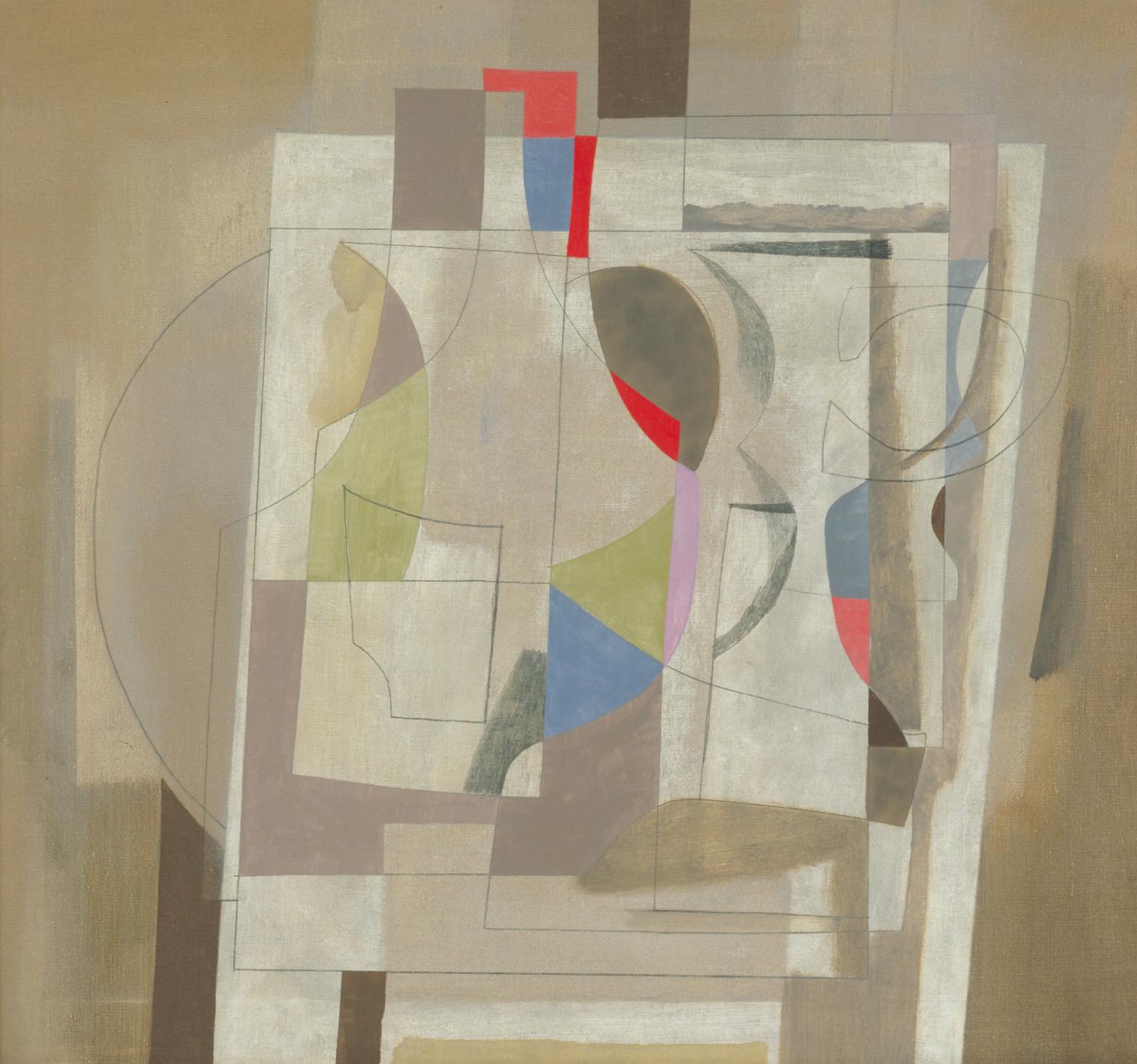
Ben Nicholson OM, Feb 2-54 1954
This painting is typical of Nicholson's still lifes of the early fifties with its overlapping forms, often transparent, but given body by accents of colour or pencil shading. The construction of these paintings is a development from his works of the mid-thirties in which Nicholson allowed the forms of earlier paintings to penetrate later reworkings. The surface has been rubbed down repeatedly and, in common with many other such works of the period, is smooth. The colour is applied both relatively freely in thin washes and precisely and opaquely. Nicholson received the Ulisse Award at the Venice Biennale later in 1954.
Gallery label, August 2004
5/30
artworks in A view from São Paulo: Abstraction and Society
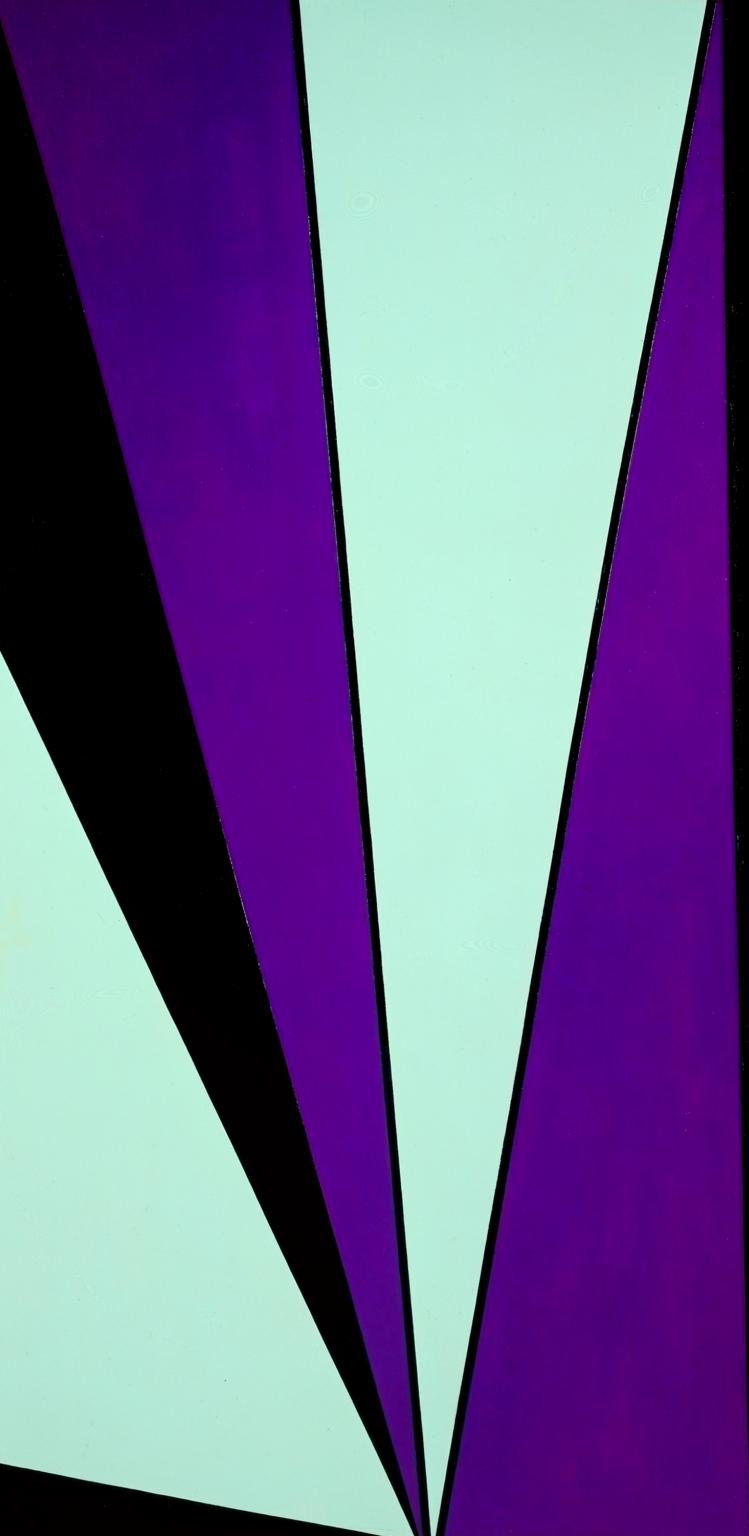
Olle Baertling, Ardek 1963
6/30
artworks in A view from São Paulo: Abstraction and Society

Saloua Raouda Choucair, Composition with Two Ovals 1951
Choucair is one of the few Lebanese artists of her generation devoted to geometric abstraction. Her approach developed in response to two distinct influences: Islamic art and the avant-garde art scene of Paris in the 1940s, where she was a student. Like many of her paintings, it uses the two basic elements of Islamic design – the straight line and the curve – as a starting point to create simple shapes which she places in rhythmic dialogue.
Gallery label, November 2015
7/30
artworks in A view from São Paulo: Abstraction and Society
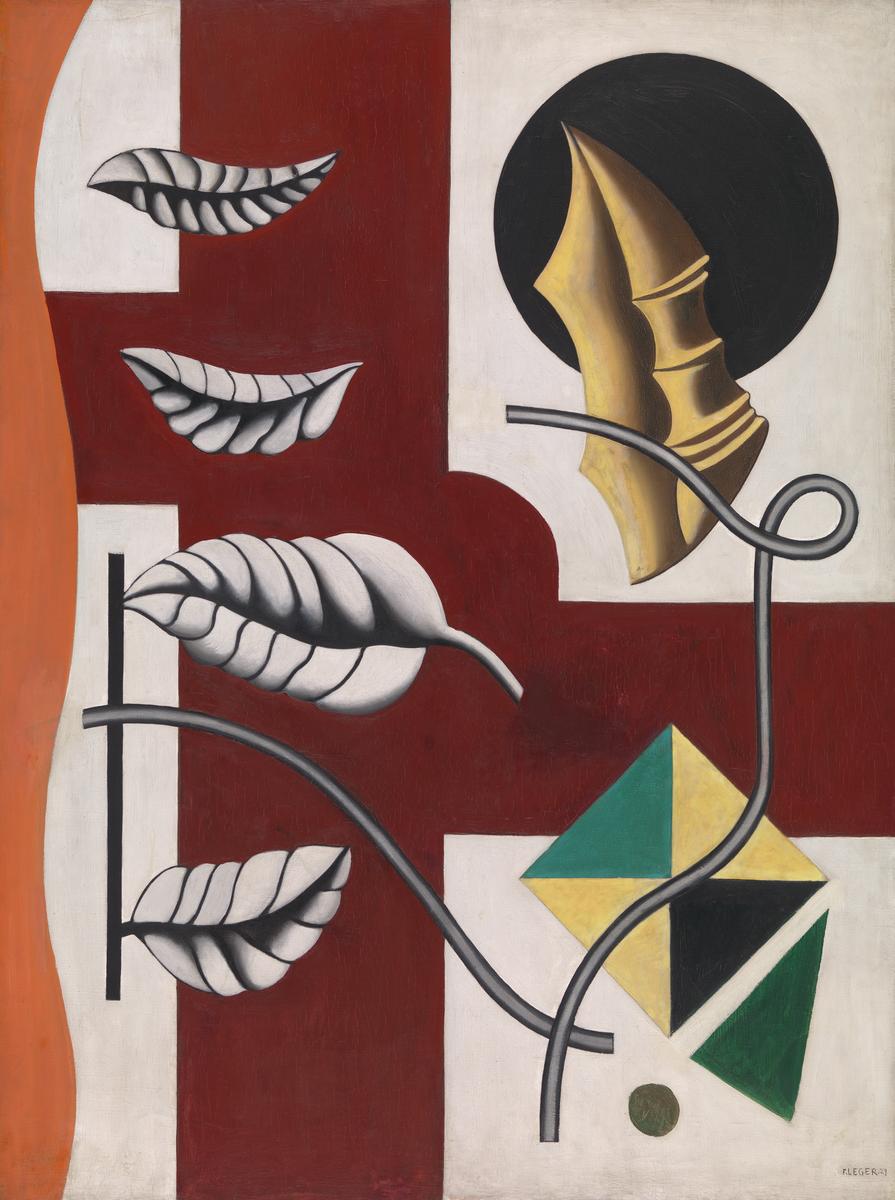
Fernand Léger, Leaves and Shell 1927
Léger’s paintings often celebrate machine-made objects and modern city life. But in the late 1920s he began to include natural forms in his work. The curving line down the left-hand side of the painting softens the underlying geometric structure of horizontal and vertical lines. It also acts as a link to the organic shapes of leaves and a shell. These naturalistic elements, with their streamlined shapes, are closely connected to the abstract parts of the image.
Gallery label, August 2019
8/30
artworks in A view from São Paulo: Abstraction and Society
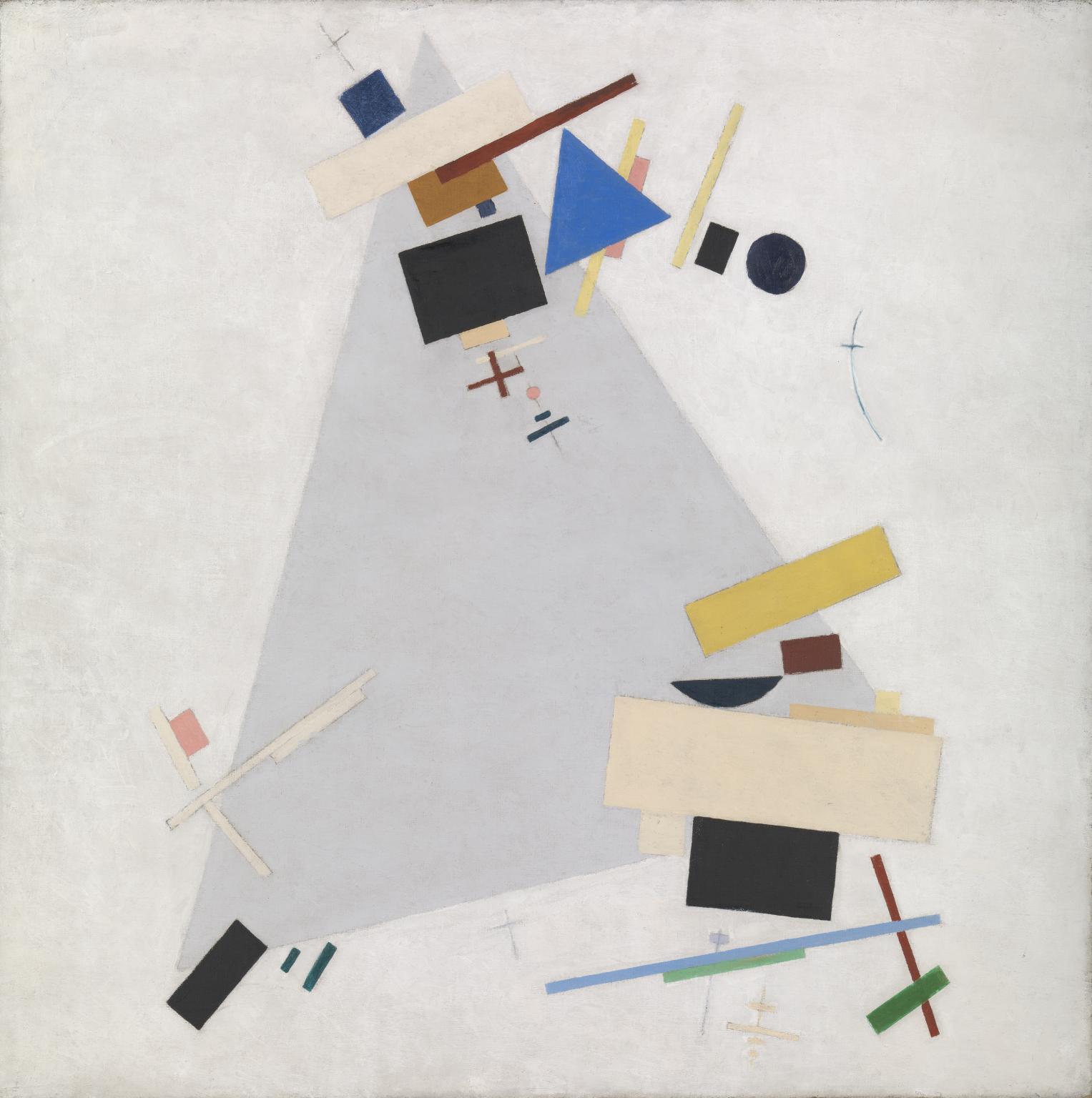
Kazimir Malevich, Dynamic Suprematism 1915 or 1916
Malevich’s abstract paintings belong to the intense period of artistic experimentation that developed in a turbulent period of the First World War and the Bolshevik Revolution. In 1915 Malevich abandoned figurative forms in favour of a purely creative experience of geometric abstraction. His first such work was a statement, as he painted a black square on a white canvas, marking a crucial moment for development of painting. Dynamic Suprematism belongs to a group of works he developed using clear geometric forms activated in space against a white background.
Gallery label, March 2022
9/30
artworks in A view from São Paulo: Abstraction and Society
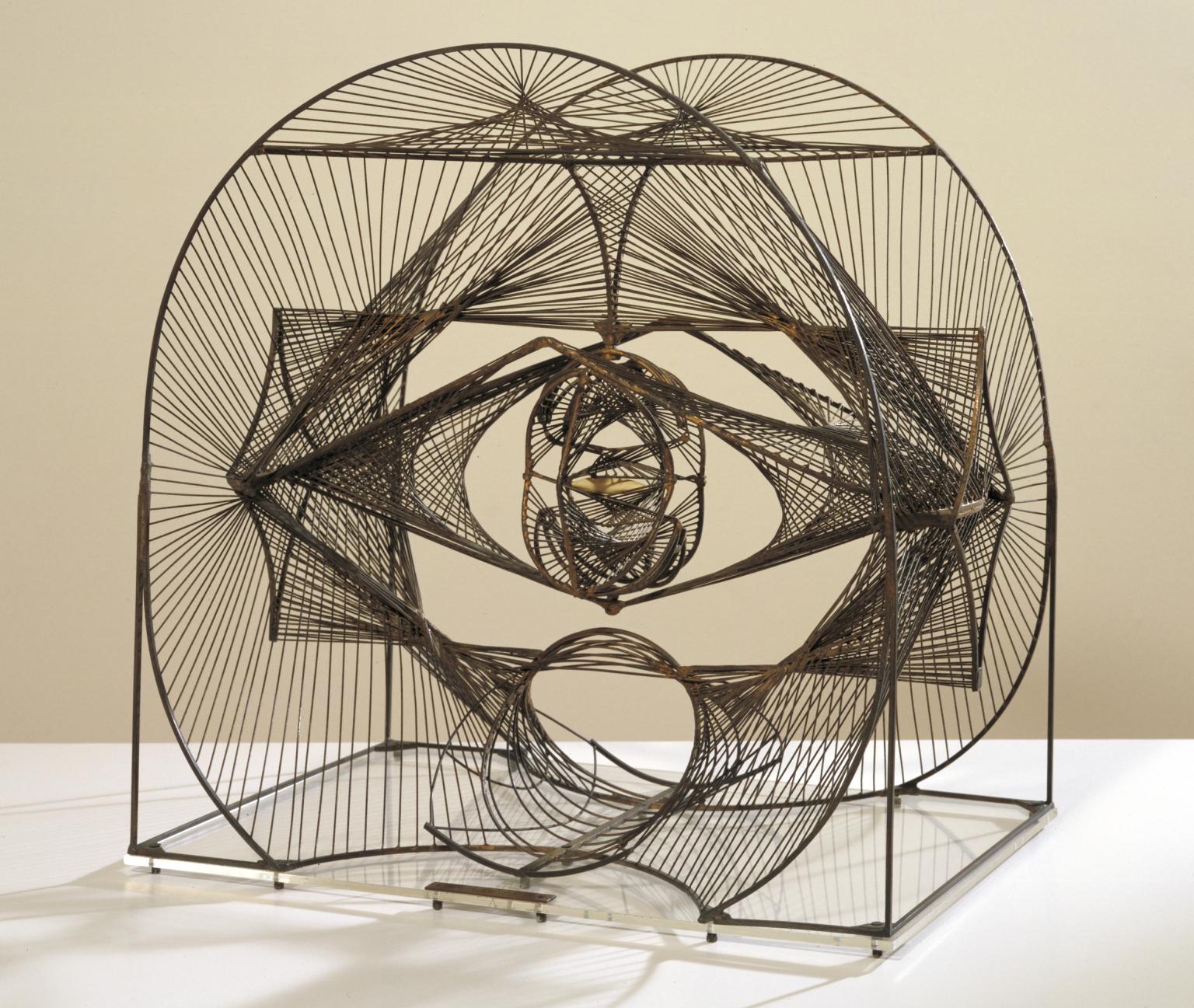
Antoine Pevsner, Maquette of a Monument Symbolising the Liberation of the Spirit 1952
This is a model for a much larger work, Pevsner’s submission for an international sculpture competition. ‘The Unknown Political Prisoner’ was a monument commission organised by London’s Institute of Contemporary Arts in 1952. Pevsner constructed the intricate organic form entirely from straight elements. He sought to create an abstract monument with an architectural presence and geometric design that could be seen in its entirety from any direction. The repeated lines are ‘a symbol of imprisonment. The motive floating in the abyss of the sphere emphasises the image of captivity; it becomes materialised in the shape of a cell.’
Gallery label, March 2022
10/30
artworks in A view from São Paulo: Abstraction and Society
Sorry, no image available
Hélio Oiticica, P11 Parangolé Cape 7, Sex and Violence, That’s What I Like 1966
In 1964, Oiticica regularly attended a samba school in Mangueira Hill, one of Rio de Janeiro’s largest favelas (highly populated residential areas which have received historic governmental neglect). His Parangolés emerged from this experience. They were made from layers of painted fabric and other found materials. Resembling capes but also flags or banners, the Parangolés are intended to be worn and danced in. Parangolé is Portuguese slang for a confused or agitated situation, as well as untrustworthy or delinquent behaviour. Oiticica adapted the word to express the capacity of these wearable works for transgression and freedom of expression.
Gallery label, January 2022
11/30
artworks in A view from São Paulo: Abstraction and Society
Sorry, no image available
Hélio Oiticica, B30 Box Bólide 17 - Poem Box 1965–6
12/30
artworks in A view from São Paulo: Abstraction and Society
Sorry, no image available
Lygia Clark, Obra Mole 1964
13/30
artworks in A view from São Paulo: Abstraction and Society
Sorry, no image available
Lygia Clark, Pocket Bicho 1966
From 1959 to 1966, Clark produced approximately seventy sculptures she called Bichos (‘creatures’). They are made from sheets of aluminium hinged together with steel pins. Intended to be moved by hand into various configurations, they have no fixed shape. ‘The arrangement of metal plates determines the positions of the Bicho, which at first glance seem unlimited’, said Clark in 1960. The work’s title also presents the sculptures as living things. ‘When asked how many moves a Bicho can make, I reply, “I don’t know, but it knows.”’
Gallery label, January 2022
14/30
artworks in A view from São Paulo: Abstraction and Society
Sorry, no image available
Lygia Clark, Matchbox Structures 1964
15/30
artworks in A view from São Paulo: Abstraction and Society
Sorry, no image available
Lygia Clark, Matchbox Structures 1964
16/30
artworks in A view from São Paulo: Abstraction and Society
Sorry, no image available
Lygia Clark, Matchbox Structures 1964
17/30
artworks in A view from São Paulo: Abstraction and Society
Sorry, no image available
Lygia Clark, Matchbox Structures 1964
18/30
artworks in A view from São Paulo: Abstraction and Society
Sorry, no image available
Lygia Clark, Matchbox Structures 1964
19/30
artworks in A view from São Paulo: Abstraction and Society
Sorry, no image available
Lygia Clark, Matchbox Structures 1964
20/30
artworks in A view from São Paulo: Abstraction and Society
Sorry, no image available
Lygia Clark, Matchbox Structures 1964
21/30
artworks in A view from São Paulo: Abstraction and Society
Sorry, no image available
Lygia Clark, Matchbox Structures 1964
22/30
artworks in A view from São Paulo: Abstraction and Society
Sorry, no image available
Lygia Clark, The Acrobates Structure 1964
23/30
artworks in A view from São Paulo: Abstraction and Society
Sorry, no image available
Lygia Clark, Matchbox Structures 1964
24/30
artworks in A view from São Paulo: Abstraction and Society
Sorry, no image available
Lygia Clark, Matchbox Structures 1964
25/30
artworks in A view from São Paulo: Abstraction and Society
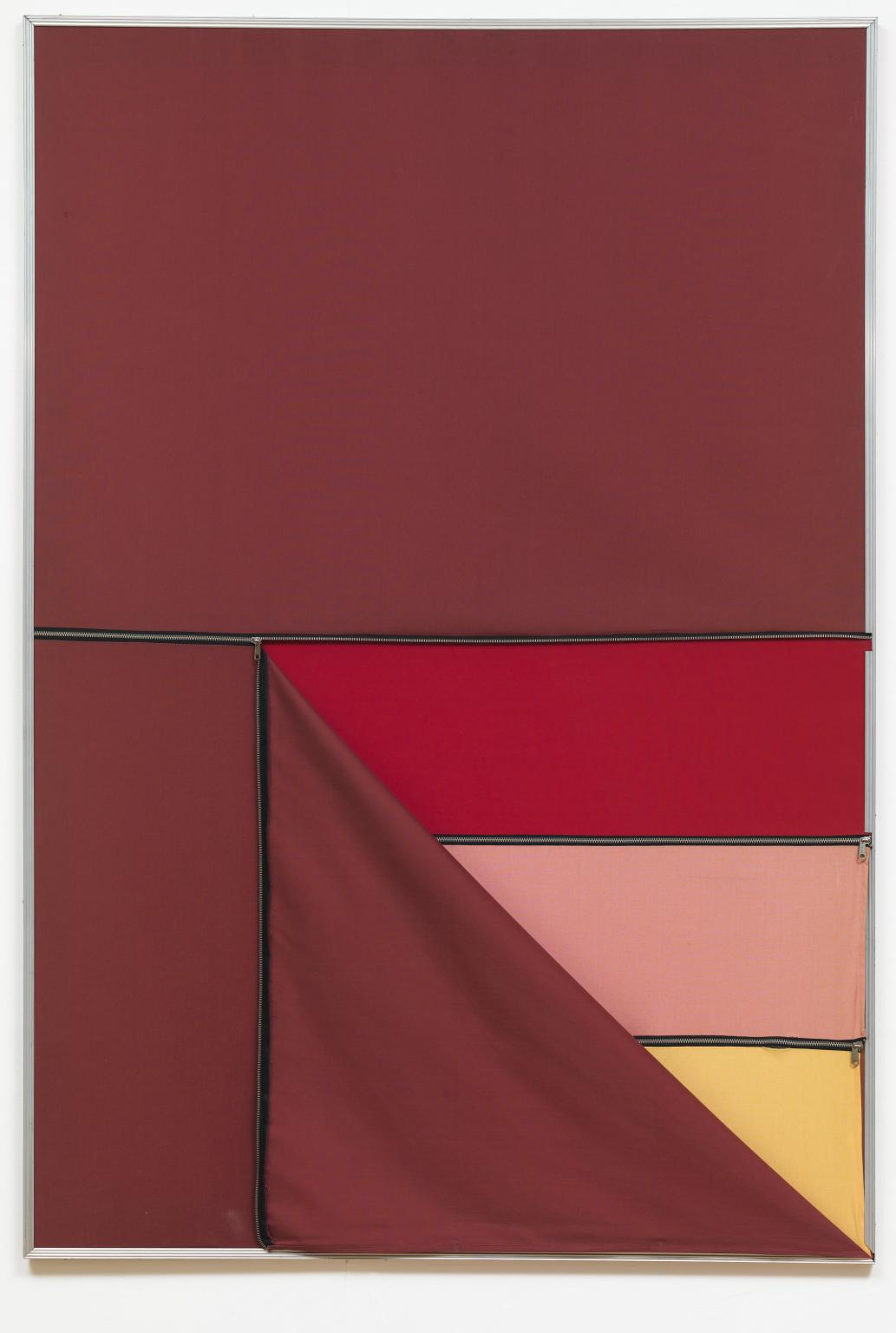
Nelson Leirner, Homage to Fontana II 1967
Homage to Fontana II is a playful tribute to Italian artist Lucio Fontana, who punctured or sliced canvases to create a new space beyond the surface of the painting. Leirner’s work replaces the cuts with zippers, revealing panels of differently coloured fabric. Originally, Leirner invited viewers to make their own reversible ‘cuts’ in the fabric by zipping and unzipping the panels. He planned to produce multiple versions of his Homage to Fontana works, to be sold at a very low cost. Leirner first exhibited at the 7th São Paulo Biennial in 1963. In 1969, he was one of several artists who boycotted the 10th Biennial to protest against the repressive actions of Brazil’s military dictatorship.
Gallery label, March 2022
26/30
artworks in A view from São Paulo: Abstraction and Society
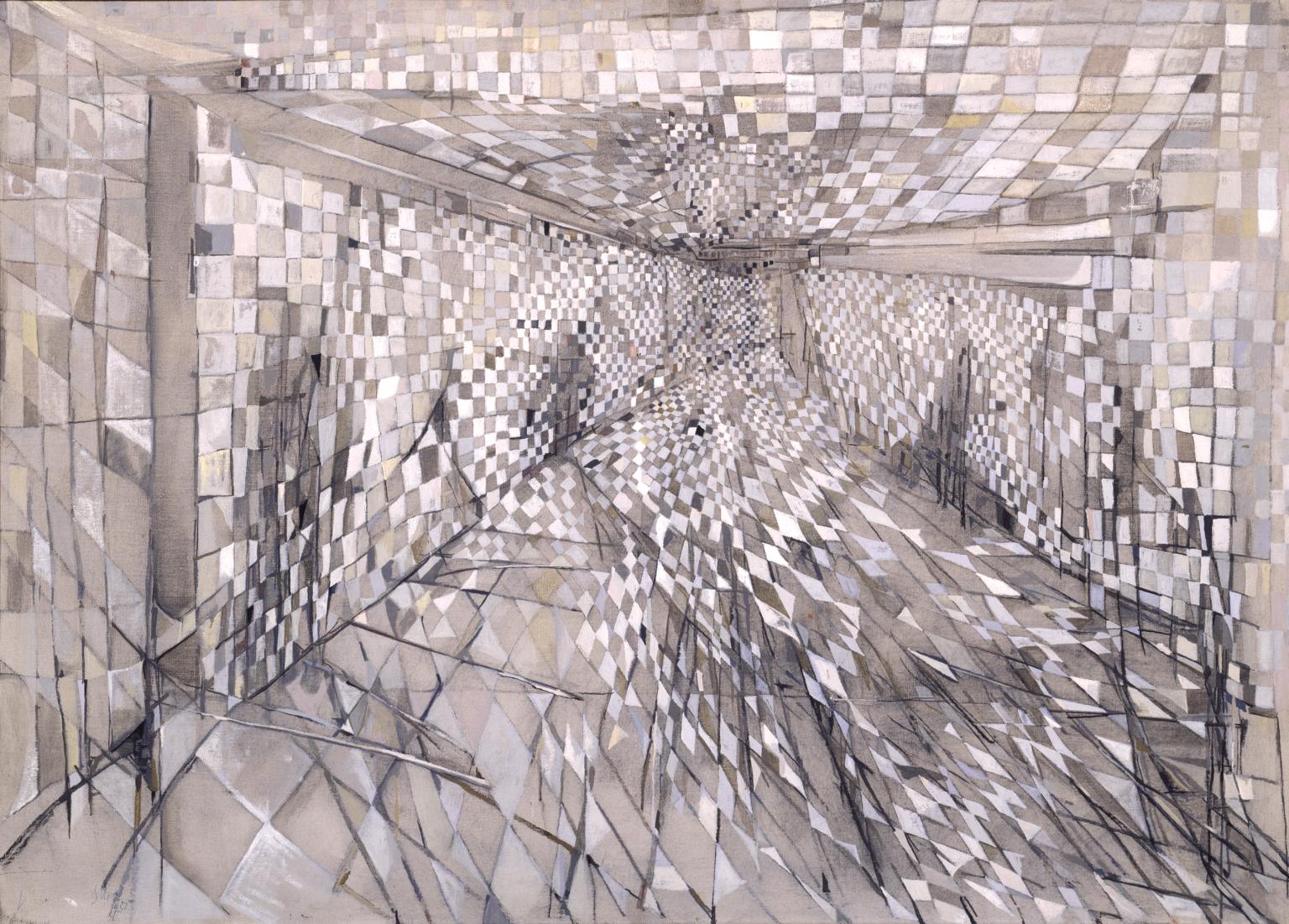
Maria Helena Vieira da Silva, The Corridor 1950
Vieira da Silva was a key figure within the field of expressive abstraction in post-war Paris. However her work always retained a strong basis of reference to the visible world. Many of her paintings depict labyrinthine interior spaces, with complex or multiple lines of perspective. The elaborate mosaic and tiled surfaces recall the domestic architecture of her native Portugal. This picture was first exhibited in 1950 as The Corridor, but later became known as The Grey Room.
Gallery label, July 2012
27/30
artworks in A view from São Paulo: Abstraction and Society
Sorry, no image available
Hélio Oiticica, Be an Outlaw, Be a Hero 1968
In February 1968, at the height of the military dictatorship in Brazil, artists Nelson Leirner and Flávio Motta invited their contemporaries to produce banners for a street event in Rio de Janeiro called Flag Sunday. Oiticica’s banner pays tribute to a friend from Mangueira Hill, nicknamed Cara de Cavalo (Horse Face), who was accused of killing a policeman and was later murdered by police. A similar banner was displayed by musicians Caetano Veloso and Gilberto Gil at a concert as a form of protest and to express solidarity with the favela.
Gallery label, January 2022
28/30
artworks in A view from São Paulo: Abstraction and Society

Felicia Leirner, Composition 1962
This construction of crossed bars is a commemorative sculpture. Leirner associated it with her mournful ‘reflections upon life and death’ after the early death of her husband. This is one of her earliest abstract works. She began studying art at the age of forty-four, having previously trained as a singer.
Gallery label, January 2019
29/30
artworks in A view from São Paulo: Abstraction and Society
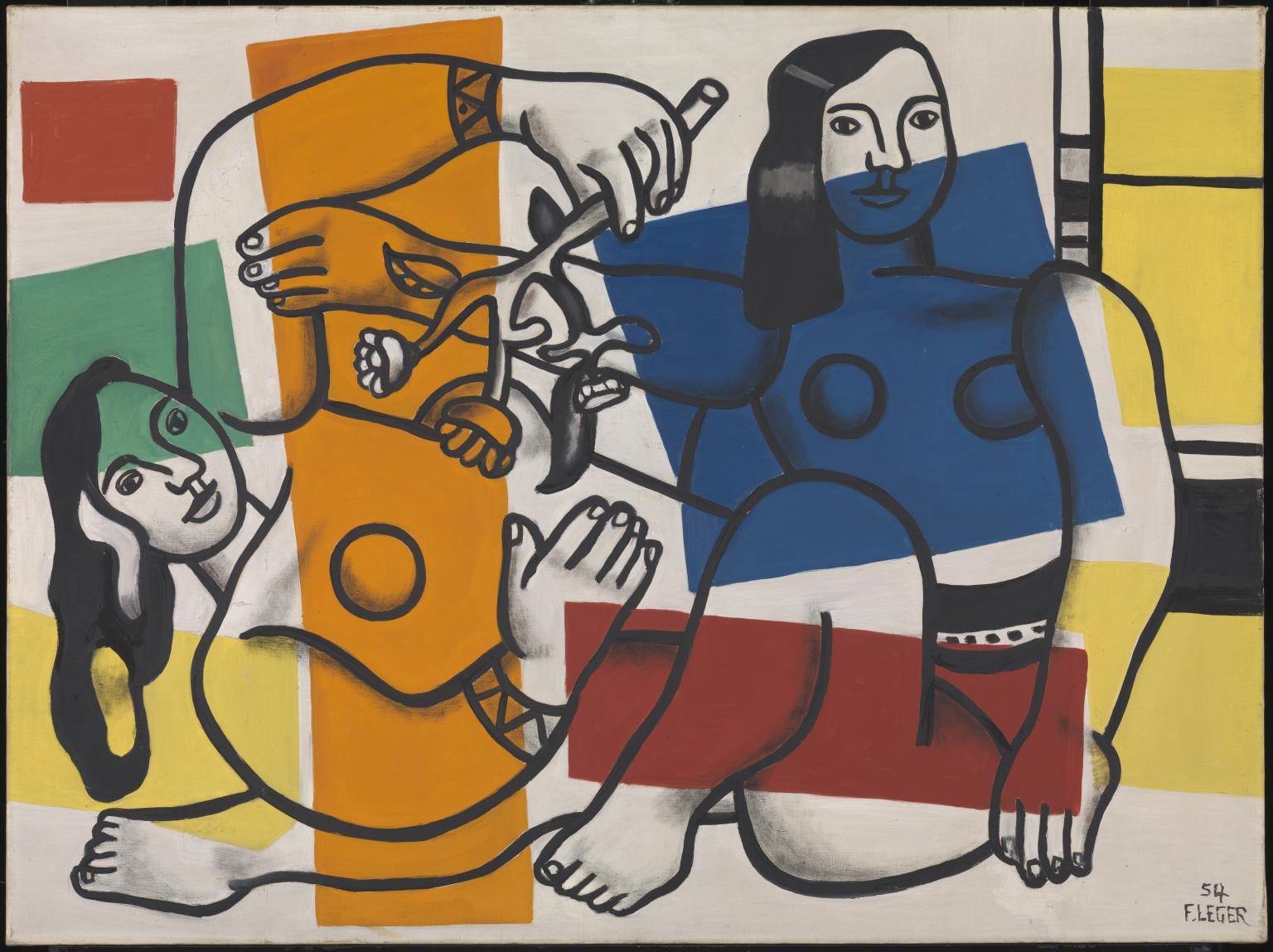
Fernand Léger, Two Women Holding Flowers 1954
Léger often painted two women together. The pairing of figures allowed him to explore the shapes and patterns created by the symmetrical image. Here the women are seen with their limbs intertwined, relaxed and at ease. One holds a flower, a symbol of natural beauty and fertility. The figures are drawn as outlines on an abstract background of bright coloured rectangles, giving the painting a sense of energy and movement.
Gallery label, February 2020
30/30
artworks in A view from São Paulo: Abstraction and Society
Art in this room

Sorry, no image available

Sorry, no image available






Sorry, no image available
Sorry, no image available
Sorry, no image available
Sorry, no image available
Sorry, no image available
Sorry, no image available
Sorry, no image available
Sorry, no image available
Sorry, no image available
Sorry, no image available
Sorry, no image available
Sorry, no image available
Sorry, no image available
Sorry, no image available
Sorry, no image available


Sorry, no image available


You've viewed 6/30 artworks
You've viewed 30/30 artworks
